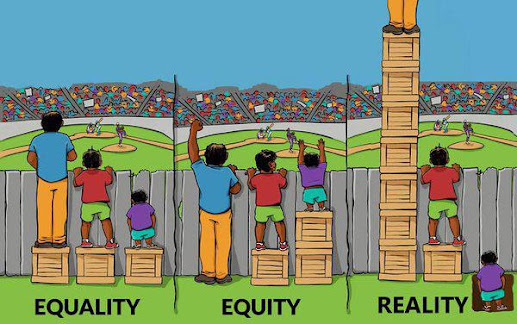Gruenfeld’s research and course at Stanford is sobering yet look into the art and science of power. The role of one’s power depends on who’s on the stage and what the story is. Rather than thinking of power as flowing to those who are the loudest or have the most impressive job title, power is how much we use, like actors do, in controlling the stage, which is why some struggle to step up and be taken more seriously while others are too aggressive and others too nice. While there is much to unpack in this two-decade-long research, three themes stand out for me in Acting With Power.
Responses to power – Aggressors, bureaucrats, and appeasers are three common responses to power and leadership. While aggressors are motivated to win approval from their peers to do the best of what they are asked to do in positions of power - often at the expense of those they are in charge of - bureaucrats are those who simply match expectations and follow rules to a T, being risk averse and have no aspirations to actually excel. The appeasers, in contrast, played nice and actually befriend their underlings and be liked. Do any of these traits relate to you?
Insecurity - Peeling back the darker veneer of the need for power is a story of insecurity. Whether it’s disinhibition, objectification, entitlement, megalomania, or bullying, abusers have a fundamental need for validation and stem from previous life experiences that deprived them. It’s an interesting psychoanalytical tool to examine how power corrupts, but Gruenfeld counsels that to wrangle a bully – disarm and detach from the abuse – one must reclaim one’s story and control of the plot. Realize that choices are available and we can choose how to respond to the bad actors who enter our realm. The way out is to focus on acting, on doing something, to step out of the role of victim. Choose your context carefully, police your borders, and don’t take the bait.
Culture of Beneficence – The book offers an antidote: beneficence - the developmental maturity to prioritize the welfare of the less powerful. We not only need to look for leaders with maturity whose ability to control selfish impulses while acting in ways to benefit others, but also enact those attributes ourselves. Rather than gaining power for personal advancement, a more mature approach to power is one that is based on lasting contributions to the organization and see power as a resource that is used to protect others rather than self-preservation. Those who give up their own resources to invest in group success with no promise of any return or personal benefit are often rewarded with more status. In evolution, it’s the only approach that makes sense, too.
As a visible minority from a historically underrepresented group, I’ve always felt that power has been fleeting. With context from critical race theory, one can see that power is inextricably more complicated with racialized and BIPOC actors. But I do believe that Gruenfeld’s message is a universal one: although we can all feel powerless, we always have more power than we think we do. We just need to play our roles.
Insecurity - Peeling back the darker veneer of the need for power is a story of insecurity. Whether it’s disinhibition, objectification, entitlement, megalomania, or bullying, abusers have a fundamental need for validation and stem from previous life experiences that deprived them. It’s an interesting psychoanalytical tool to examine how power corrupts, but Gruenfeld counsels that to wrangle a bully – disarm and detach from the abuse – one must reclaim one’s story and control of the plot. Realize that choices are available and we can choose how to respond to the bad actors who enter our realm. The way out is to focus on acting, on doing something, to step out of the role of victim. Choose your context carefully, police your borders, and don’t take the bait.
Culture of Beneficence – The book offers an antidote: beneficence - the developmental maturity to prioritize the welfare of the less powerful. We not only need to look for leaders with maturity whose ability to control selfish impulses while acting in ways to benefit others, but also enact those attributes ourselves. Rather than gaining power for personal advancement, a more mature approach to power is one that is based on lasting contributions to the organization and see power as a resource that is used to protect others rather than self-preservation. Those who give up their own resources to invest in group success with no promise of any return or personal benefit are often rewarded with more status. In evolution, it’s the only approach that makes sense, too.
As a visible minority from a historically underrepresented group, I’ve always felt that power has been fleeting. With context from critical race theory, one can see that power is inextricably more complicated with racialized and BIPOC actors. But I do believe that Gruenfeld’s message is a universal one: although we can all feel powerless, we always have more power than we think we do. We just need to play our roles.













